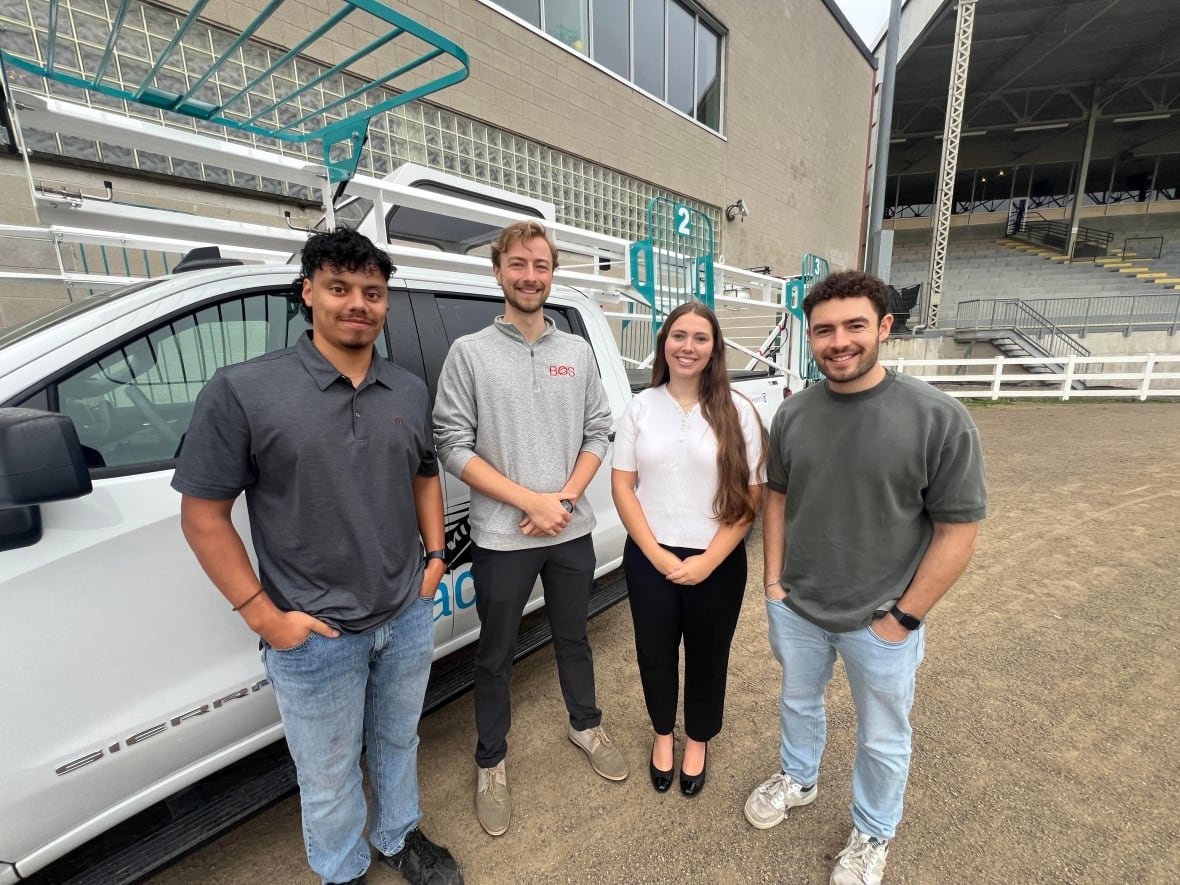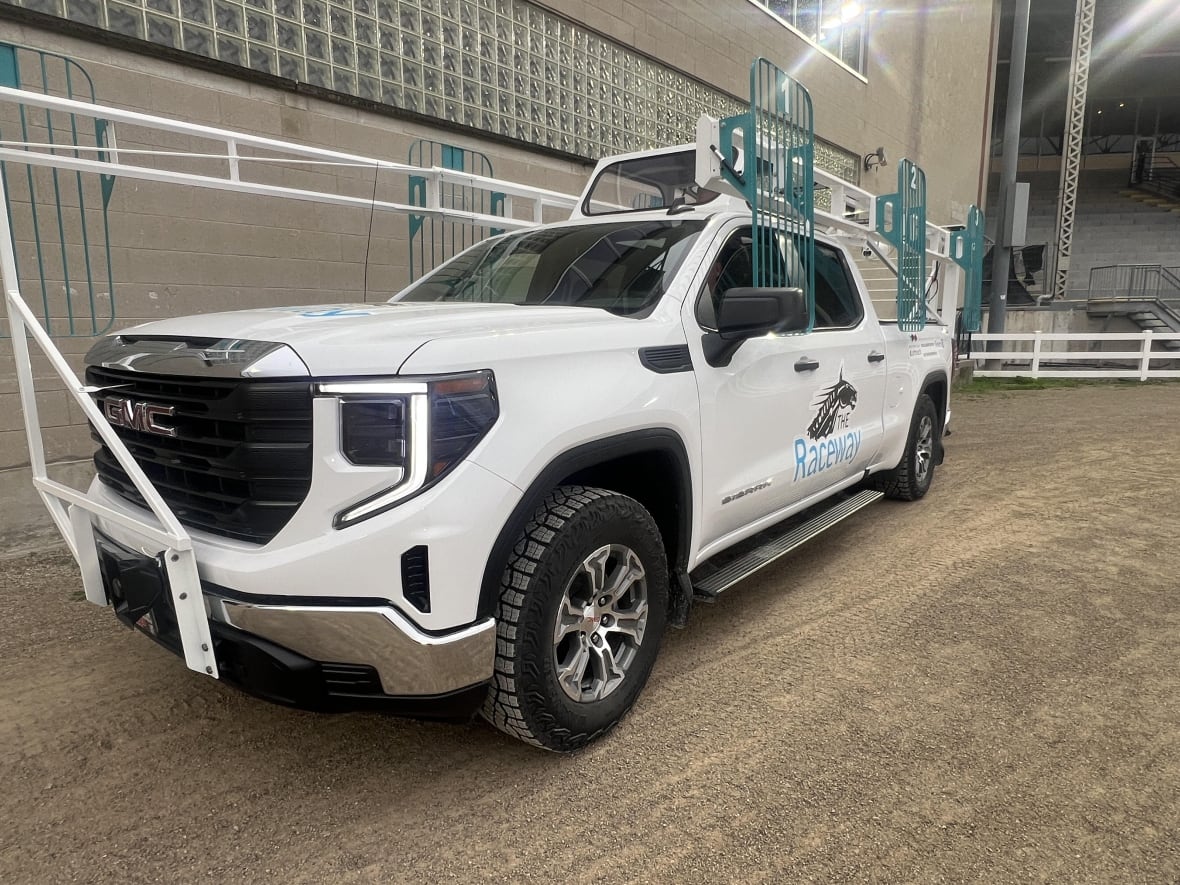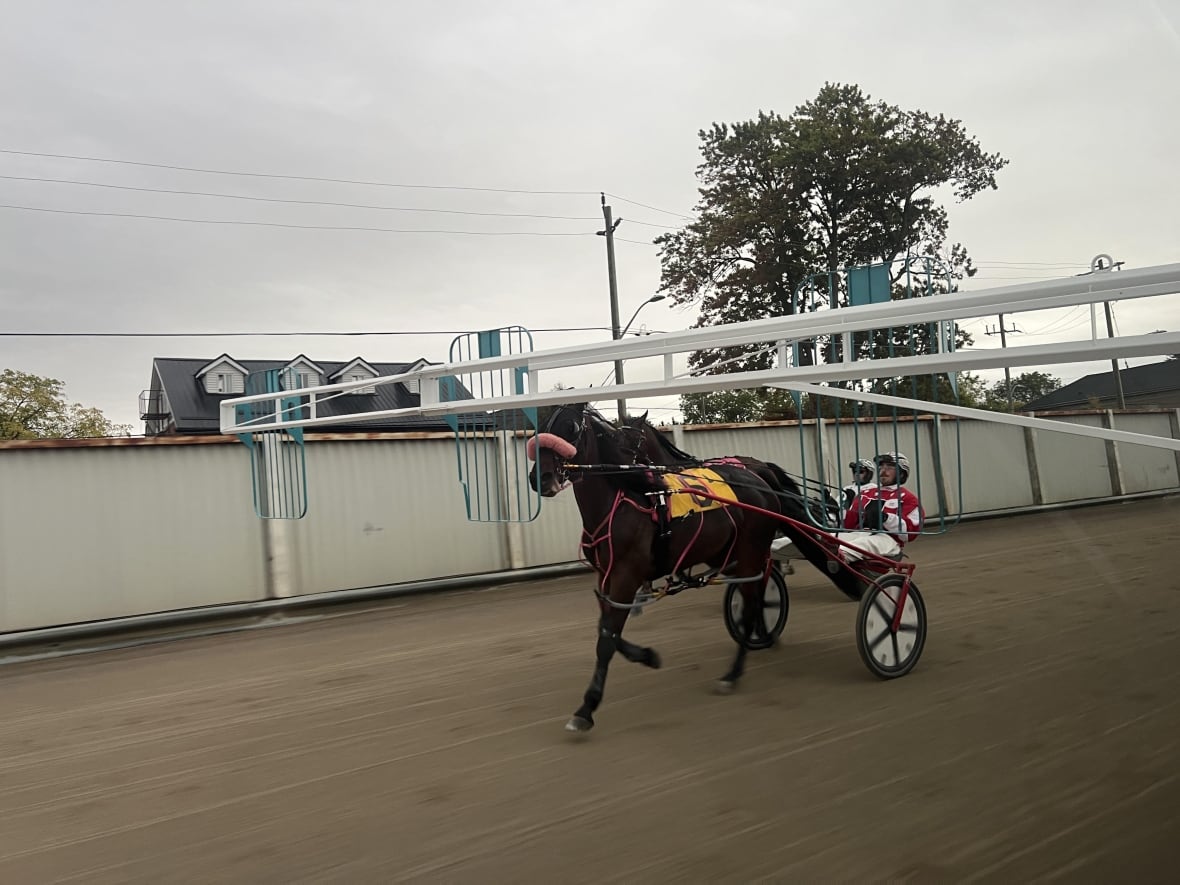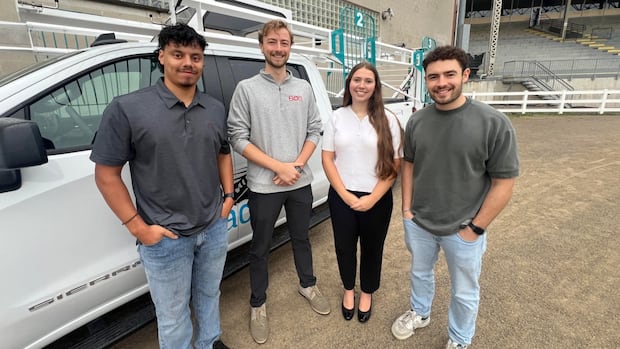A fan of horse-racing growing up, Lauren Douglas knew she spotted a winner when the chance came to work on a design for a new starting vehicle at London’s racetrack at the Western Fair District.
Douglas, a Western University graduate heading into the field of biomedical engineering, was looking over the list of available options for a “capstone” project, which are a real-world engineering assignments student engineers tackle before graduation.
 Four engineering students from Western University worked together on coming up with the start vehicle’s design. From left to right are Alexander Novoa, Ethan Reid, Lauren Douglas and Jeffrey Donado. (Andrew Lupton/CBC News)
Four engineering students from Western University worked together on coming up with the start vehicle’s design. From left to right are Alexander Novoa, Ethan Reid, Lauren Douglas and Jeffrey Donado. (Andrew Lupton/CBC News)
“I thought it would be very cool to design a new starting gate for the future,” said Douglas. “I said ‘I’d really like that one.’ We ranked that project first and we got it.”
Working together, four Western engineering students had to design a starting vehicle to replace a Crown Victoria sedan that had been in service at the track for 23 years.
To fully understand the challenge, you have to understand a bit about the starting vehicle’s essential role on the track.
In harness racing, the race doesn’t begin with horses standing in a stationary gate, then charging forward the moment the gates fling open. Those are used in thoroughbred racing.
Instead, harness races employ a rolling start using a start vehicle, typically a car equipped with two mechanical gates that extend outward on each side.
As the car drives toward the start line in the moments leading up to the race, the horses trot up to their assigned spot on the gate. Once the nose of the first horse crosses the start line, the car races forward while retracting the gates. Done properly, the rolling start gives every harness driver an equal chance at winning without allowing any horse to get a head start.
The specs of the project required the students to come up with a design for adding gates to a new vehicle. The gates had to operate reliably but also withstand winter conditions, as London’s harness racing season has evening races throughout the winter.
 The new starter vehicle is a 2025 GMC Sierra, chosen in part because it has the carrying capacity for the gate equipment and will be sure-footed in the snow. The previous starter vehicle was a Crown Victoria. (Andrew Lupton/CBC News)
The new starter vehicle is a 2025 GMC Sierra, chosen in part because it has the carrying capacity for the gate equipment and will be sure-footed in the snow. The previous starter vehicle was a Crown Victoria. (Andrew Lupton/CBC News)
They conferred with designers of other new race vehicles, including one at the track in Leamington, Ont.
The young engineers started their project with a robust vehicle: A 2025 GMC Sierra pickup with four-wheel drive.
From there, their goal was to come up with a design that would allow the gates to be easily switched to another vehicle. That way, any breakdown would be less likely to disrupt the race schedule
The mechanicals in the old vehicle were welded into the trunk space. In the new design, they are bolted into the truck bed and can be easily switched to a new truck if needed.
“We wanted to design something that is transferable,” said Douglas. “If this truck were to give it up 10 or 20 years from now, we can easily switch it to another truck by just re-drilling those mounting plates.”
The design also had to be quiet.
 Starter John Lilley guides the start of every race from a raised, rear-facing seat in the vehicle. He said new vehicle is an ‘awesome’ upgrade. (Andrew Lupton/CBC News)
Starter John Lilley guides the start of every race from a raised, rear-facing seat in the vehicle. He said new vehicle is an ‘awesome’ upgrade. (Andrew Lupton/CBC News)
Ethan Reid, another student on the design team, said hydraulic power is used to push the gate arms outward instead of an electric motor.
“It’s a very smooth and very quiet which is a large concern in the middle of a race,” said Reid. “You don’t want to be scaring the horses with clanging gates or a jerky motion.”
The students also had to account for the fact that running a starting vehicle is a two-person operation.
There’s a driver who steers the vehicle but also a starter who sits in a backward-facing seat to keep an eye on the drivers and watch for any rule infractions.
In the moments leading up to the start it’s the starter, not the driver, who actually has his own hand-operated throttle to ensure the vehicle moves at the right pace. Once past the starting point, the driver takes control of both speed and steering.
The new vehicle has a speaker system to the starter can communicate with the drivers. There’s also an array of LEDs to ensure drivers can steer their horses right up to the gate, even in a snowstorm.
 This view from inside the starter vehicle shows the horses trotting up to the extended gate arms in the moment’s before the start. (Andrew Lupton/CBC News)
This view from inside the starter vehicle shows the horses trotting up to the extended gate arms in the moment’s before the start. (Andrew Lupton/CBC News)
The new truck also features what the engineers call a “pop top” — a glassed in box extending out of the top of the cab to give the starter a clear view of the horses.
Raceway starter John Lilley allowed CBC News to ride along during the first race of Tuesday’s card. The new start vehicle entered service last week when the new racing season began. Lilley says so far, it’s a winner.
“It’s awesome,” he said of the vehicle. “It’s a very good truck. Heavy duty, lots of power. I can see good out of it.”
Although the Western students shaped the design, the starting gates were built by Dave Woods. His main job is building sulky bikes, the lightweight, wheeled carriages the horses pull in harness racing.
Standing at the track Tuesday, Alexander Novoa, another member of the Western team, said he’s happy with the final result.
“I wouldn’t think when I started my degree that this would be my capstone project but I’m happy we did choose it and I’m happy with what my team was able to come up with,” he said.
The harness racing season at Western Fair District continues through to May.

